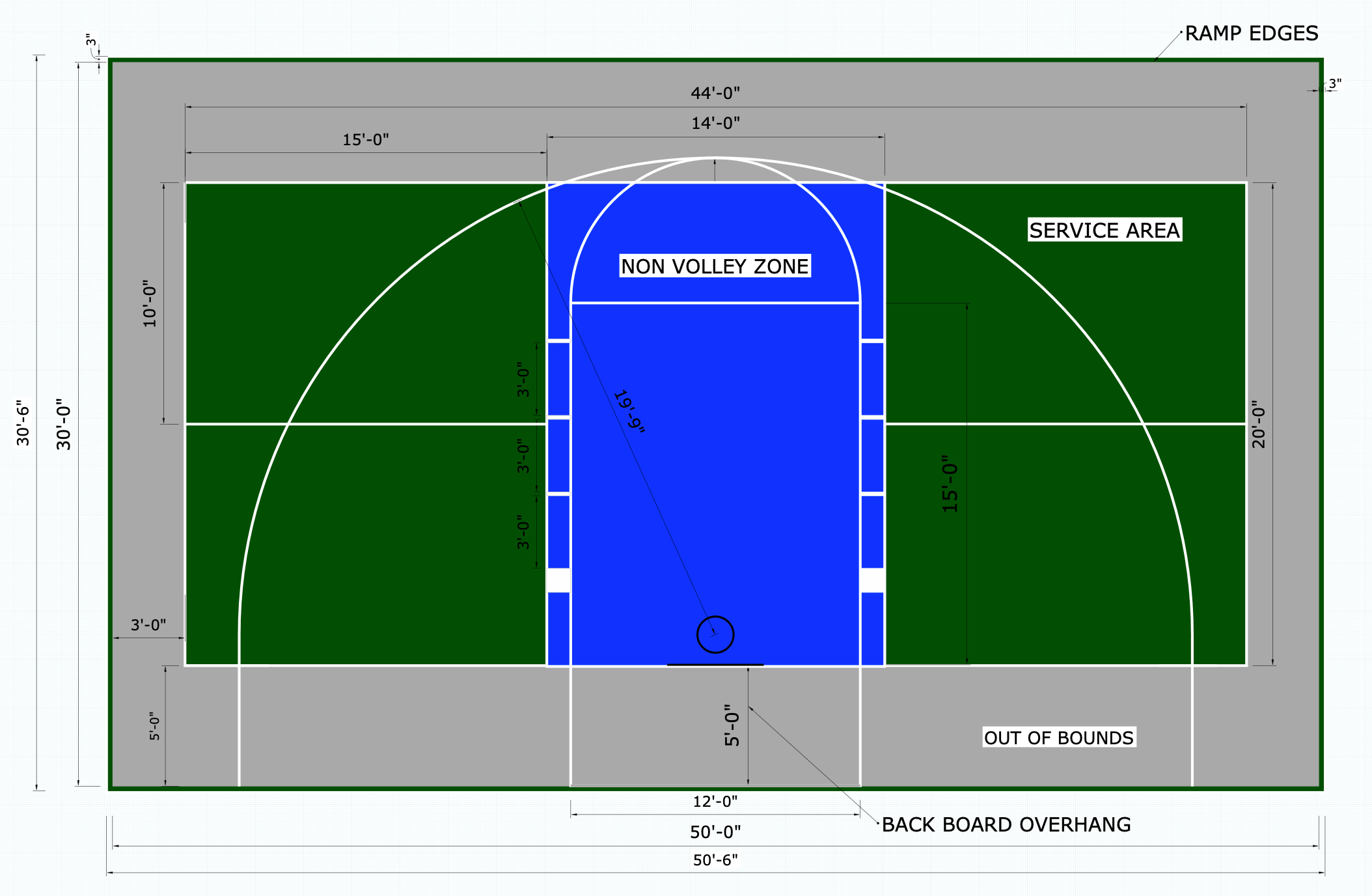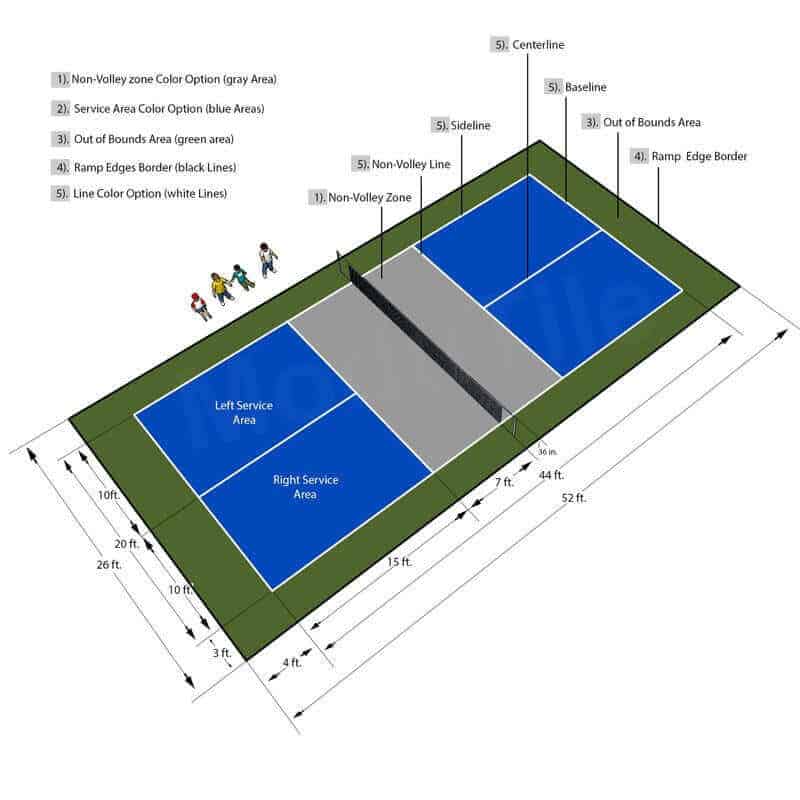The Vital Providers Needed for Structure and Maintaining High-Quality Pickleball Judiciaries
The construction and maintenance of top quality pickleball courts pivot on a variety of essential solutions that guarantee optimal efficiency and gamer security. Secret considerations consist of the choice of ideal surface products, adherence to standard measurements, and the application of effective water drainage systems.

Picking the Right Surface Area Materials
Selecting the appropriate surface products for pickleball courts is critical to guaranteeing optimum playability and safety. The selection of surface directly affects video game characteristics, player convenience, and injury prevention. Typical products consist of asphalt, concrete, and specialized acrylic finishes, each offering unique benefits and considerations.
Asphalt is commonly favored for its cost-effectiveness and resilience; however, it requires normal maintenance to avoid splitting and surface deterioration. Concrete offers a robust and lasting alternative, providing a smooth having fun surface that can stand up to hefty use. It may demand additional therapy to improve traction and reduce slipperiness.
Polymer coverings have obtained appeal due to their capacity to enhance efficiency attributes, such as shock absorption and grip, while also permitting personalization in color and style. These finishes can be applied over existing surface areas, making them a functional alternative for court upgrades.
Eventually, the choice of surface material need to straighten with the planned usage of the court, budget restrictions, and neighborhood climate problems. Consulting with experts that specialize in sporting activities center building can give valuable insights, making certain that the selected materials meet both player demands and safety standards.
Correct Court Dimensions and Format

The internet height is set at 36 inches at the sidelines and 34 inches in the facility, which is vital for maintaining the honesty of the game. Furthermore, the court needs to be surrounded by at the very least 3 feet of clear space on all sides, enabling secure activity and avoiding collisions with surrounding challenges.
Positioning is one more vital facet of court layout. Ideally, courts need to be lined up north-south to lessen the effect of sunlight glow on gamers. Focus to these details will certainly enhance the general having fun experience and promote fairness in competitors. By adhering to these specs, facility supervisors can make certain that their pickleball courts meet the required standards for both recreational and expert play.
Efficient Drain Solutions
Reliable water drainage remedies are crucial for preserving the top quality and playability of pickleball courts, especially after harsh climate. Illinois and midwest. Correct drain systems protect against water build-up on the court surface area, which can lead to surface degradation, mold and mildew development, and safety and security risks during play
To achieve effective drainage, it here is necessary to make the court with a minor slope, preferably around 1-2% away from the. This gradient assists in the all-natural overflow of water. In addition, incorporating a well-designed drainage system, such as perforated pipelines or French drains pipes, can better boost water monitoring. These systems need to be tactically put at nadirs to accumulate and redirect excess water effectively.
Porous surfaces, like particular types of asphalt or specialized sporting activities surface areas, permit water to penetrate, decreasing the threat of standing water. By implementing these effective water drainage services, facility managers can ensure that pickleball courts continue to be playable and safe, consequently improving the total experience for players and preserving the longevity of the financial investment.
Normal Maintenance Practices
While the satisfaction of pickleball is commonly tied to the quality of the court, regular upkeep methods are important for protecting its problem and making certain a risk-free playing atmosphere. The very first step in maintenance includes routine assessments to identify any kind of splits, surface wear, or debris that could influence gameplay.
Cleansing the court consistently is vital, as this stops the build-up of dirt, leaves, and various other products that can deteriorate the surface area and create threats. A pressure washer or a mop can effectively get rid of particles while ensuring that the court surface remains undamaged.
In addition, routine resurfacing is necessary to preserve the court's having fun qualities and prolong its life-span. This might involve applying a brand-new layer of acrylic or sealant site here to protect versus wetness and UV damage.
Additionally, preserving the surrounding locations, such as fences and webs, adds to the total safety and security and aesthetic appeals of the facility. Establishing a maintenance schedule that consists of these practices will certainly not only boost the playing experience however also secure versus pricey repairs in the future. Normal interest to these elements ensures that pickleball courts remain an inviting and risk-free environment for players of all skill degrees.
Illumination and Availability Considerations
Appropriate illumination and availability considerations are essential elements in the style and maintenance of pickleball courts. Sufficient lights not only boosts the playing experience but additionally makes certain security for players and spectators during night or low-light problems. Courts should be lit up with premium LED illumination, providing consistent brightness while reducing glare. The positioning of fixtures need to be purposefully planned to stay clear of shadows and make certain clear presence of the court limits and net.
Accessibility is similarly important to promote inclusivity. Courts ought to comply with the Americans with Disabilities Act (ADA) guidelines, guaranteeing that they are easily obtainable for people with movement impairments. This consists of giving ramps, appropriate signage, and designated seating locations for viewers (Illinois and midwest). Additionally, implementing a smooth surface and making certain that the bordering locations are without barriers can promote better accessibility.
Including both lights and access factors to consider not just enhances the total customer experience but also underscores the dedication to developing a comprehensive and inviting setting for all players. By focusing on these components, facilities can promote a lively pickleball area that draws in players of different ability levels and histories.

Conclusion
Finally, the facility and maintenance of high-grade pickleball courts demand a thorough method that includes picking suitable surface products, sticking to conventional dimensions, and carrying out reliable drainage systems. Routine maintenance and assessments are vital for long life, while sufficient lights and availability attributes advertise a risk-free and comprehensive atmosphere for helpful site gamers. Jointly, these crucial services not just improve the playability and convenience of the courts however additionally contribute considerably to injury prevention and total complete satisfaction of individuals.